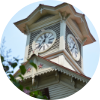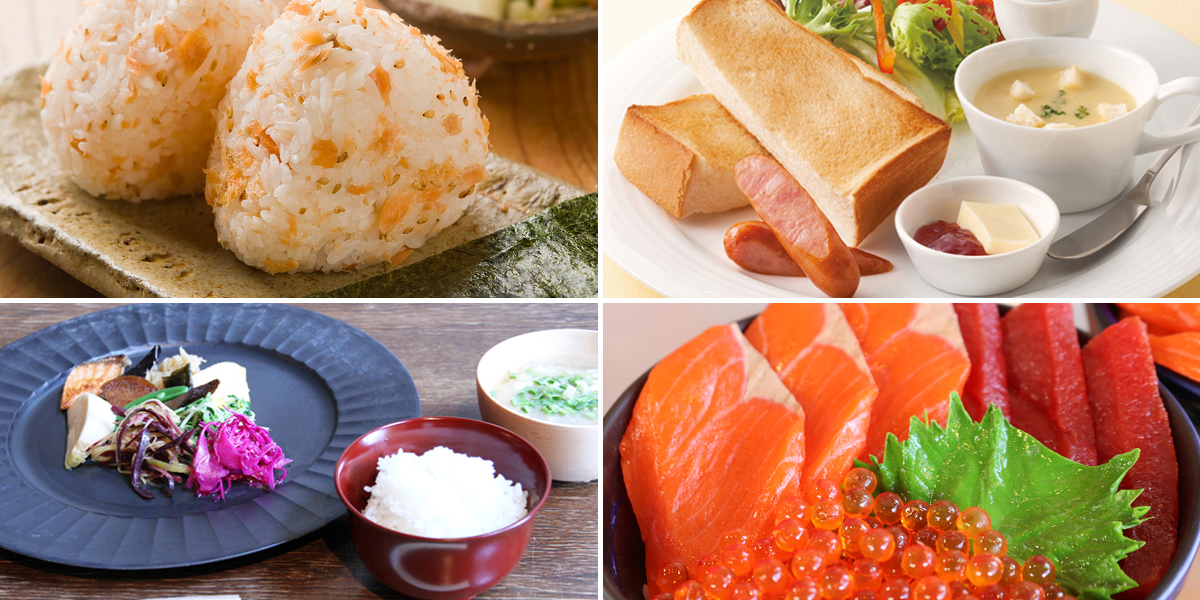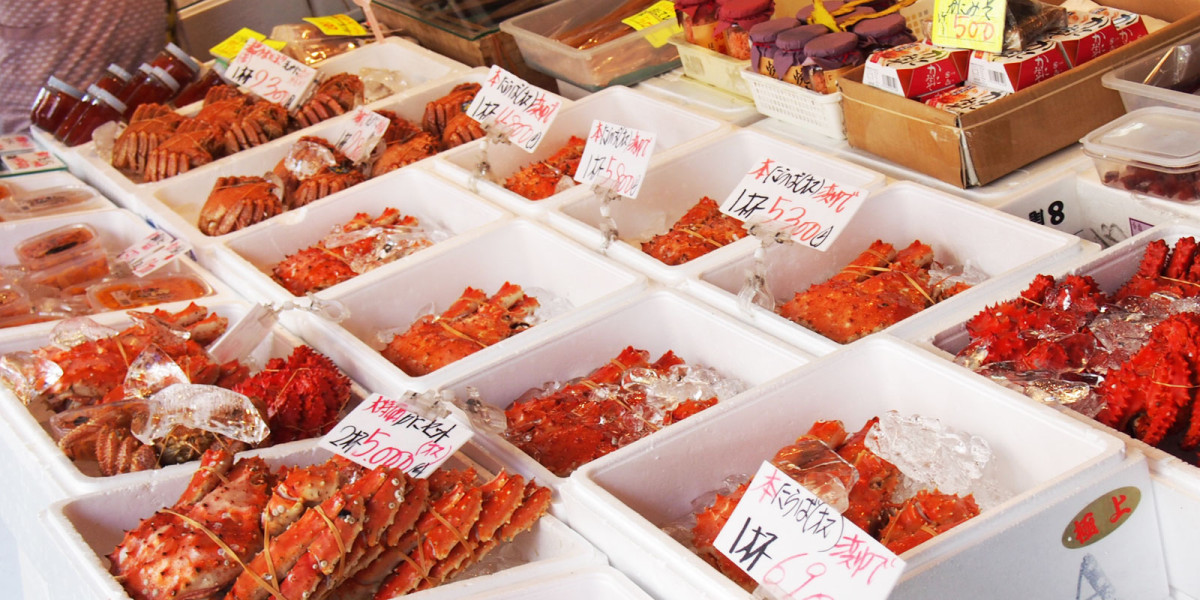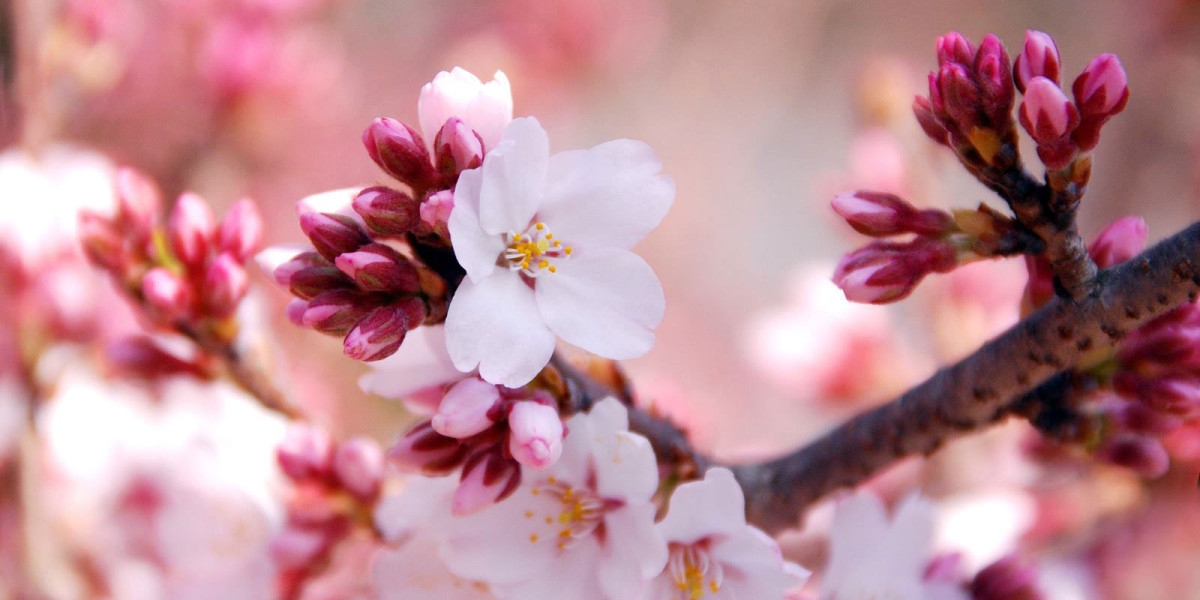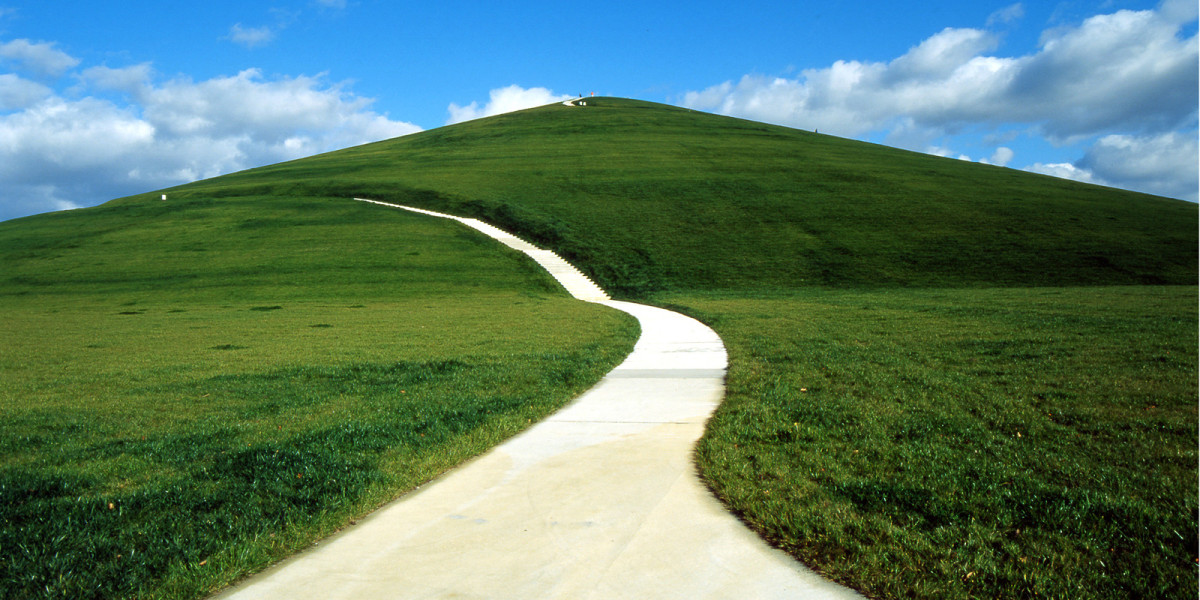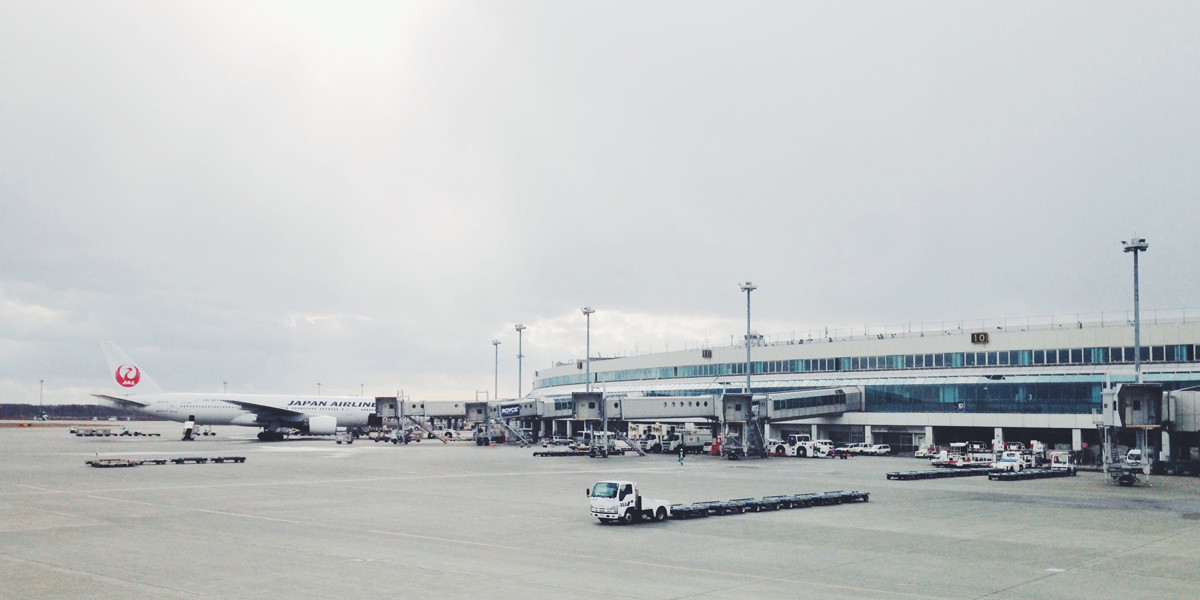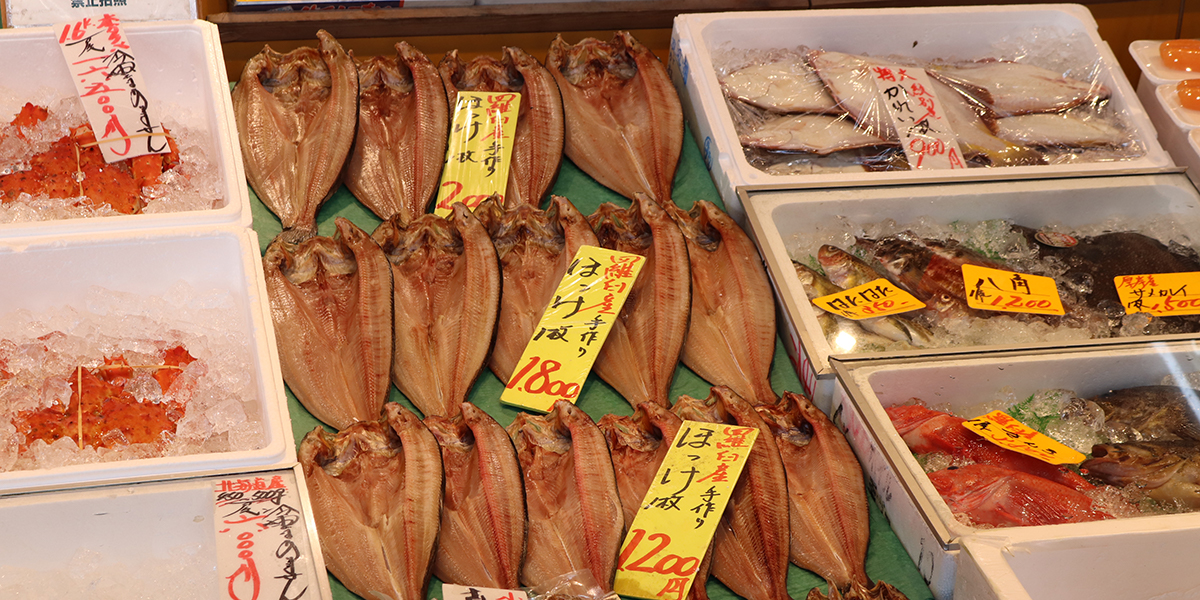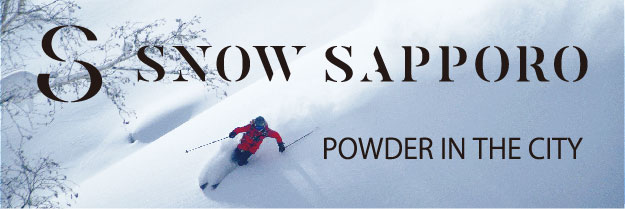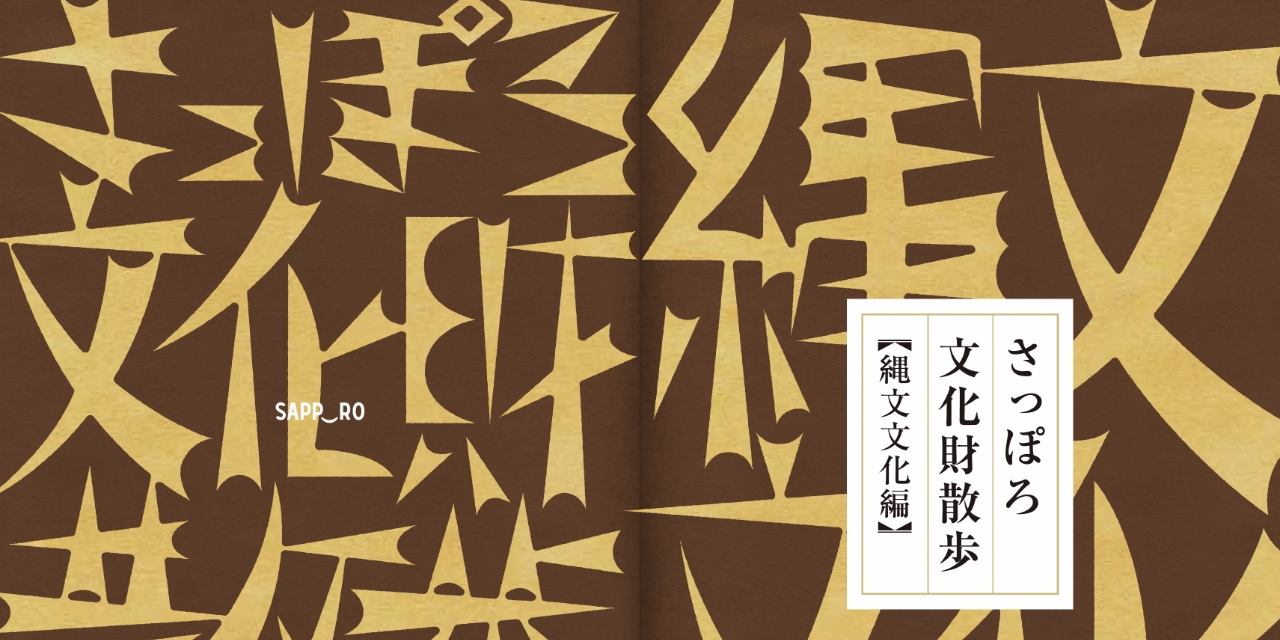
Story Behind Jomon Culture Jomon and Sapporo ー Exploring the Jomon Period in Sapporo ー
There are many remnants of people’s lives dating to from the
Paleolithic time all over the Japanese archipelago.
Here in Sapporo, some stone tools were unearthed. Palpable remains of
people gathering and subsiding emerged in the Early phase of the
Jomon Period, dating back approximately 8000 years in this
big city a population of nearly 2 million today.
The invention of pottery, which defines the characteristics of the Jomon Period,
dramatically changed the people’s eating habits during the course of
climate and environmental change.Heating food immensely improved the
nutrition and hygiene. Building up a stable food procurement by
combining hunting, fishing and gathering made hunter-gatherers sedentary. Furthermore, it can be said that
sedentism enabled these
people to afford affluent, spiritual and artistic cultures.
In the town of Sapporo where we live, lots of Jomon ruins are buried
underneath us and our lives are literally built over them. What was
this Jomon culture like? Follow the traces and you will find the
people of the ancient times who led a rich life and nurtured a highly
sophisticated culture while mingling with the nature and interacting
with the people in other areas.
What Sapporo looked like During the Jomon Period?
In July 2021, Jomon Prehistoric Sites in Hokkaido and Northern Tohoku region were registered as World Heritage Sites. Jomon Prehistoric Sites in Hokkaido and Northern Tohoku refers to a cultural sphere between the Tsugaru Strait ranging from the northernmost part of Sapporo to the southernmost parts of Morioka and Akita. The area consists of multiple sites that represent the Jomon culture that thrived for more than 10000 years.
The closest site from Sapporo is Kiusu Earthwork Burial Circles
(Chitose) which is famous for the structural ruins of the Late Jomon
phase. This is considered as a part of World Heritage..
Then what about Sapporo which does not have constitutional assets?
Actually, a lot of artifacts from the Jomon Period have been excavated in Sapporo as well. It is not well known, but Sapporo has a rare geographical environment with various types of topography within. A mountainous terrain that shares a large part of the city and that divides central and southern Hokkaido. Plateaus and hilly areas of the southeastern part prove the massive eruption of the Shikotsu Caldera dating back to 40000 years ago. The northern part of the city was formed into a typical delta by the Toyohira River, a large part of which was immersed into the sea forming a bay during the warm period. Sand dunes formed through the retreat of the water from the bay. The northern lowlands with vast wetlands and peatlands formed as a result of global cooling and the transport of sediment by the river that altered the bay into a land. The rivers crossed the land and natural levees made by the rivers. Not many large cities show such a variety of topography in one municipality.
The remnants of Sapporo’s Jomon culture are preserved along the big and small rivers which have watered these lands, from the mountainous areas, plateaus, hills, flatlands, and lowlands to the sand dunes close to the Ishikari Bay. More than 270 Jomon sites have been found in the city so far. Sapporo has been a rich and comfortable land for people to live in since the Jomon Period.

Transition of Jomon Artifacts
During the early phase of the Jomon Period, around 8000 years ago, emerged a group of people who chose to live in this place, now Sapporo. In those times aggressive global warming peaked. The landscape of Sapporo back then was completely different from the one we are familiar with today, as the annual average temperature was 2 degrees higher and the sea level was 2 to 3 meters higher than now. The wide-spreading view of the ocean and the bay were visible from Mount Moiwa and Maruyama, even from Tenjinyama. People dwelled on the east side plateau and riverside in the hills, benefiting from the blessings of mother nature and living in this area for a long period of time.
Once the temperature peaked, it went down gradually. The
inner bay disappeared approximately 6000 years ago because of
the influx of sediment from the rivers. In the Middle phase of
the Jomon Period, from around 5500 to 4500 years ago, the climate continued
to be mild, with the largest amount of remaining artifacts coming from this period. From this point, the people’s habitat expanded from the
eastern plateau and hills to the delta of the Hassamu River and
the Momijiyama Sand Dunes. From the Late phase and on, the number of
relics dropped along with the global cooling while artifacts started to remain in the delta of Sapporo and the lowlands of the alluvial plain, where few remained until that point. How did life in Sapporo change around 2300 years ago, when the Jomon culture was coming to an end after 6,000 years of people living in Sapporo?
The time span of the Jomon Period seems like an eternity for us in modern times, yet
it shifted to the Post Jomon Period. Let’s take a look at how Sapporo
was like in those times.

Pink, orange (below), gray: alluvial fan; orange
(above): sand dunes; red points: Jomon artifacts
Sapporo in the Final phase of the Jomon Period
-What We Know
from the Two Iconic Remains-
At that time, the tip of the fan-shaped area of the Hassamu River was probably the most stable and well-drained area in the city, and it was convenient for people to move around and live anywhere. This is almost equivalent to the area ranging from today’s Nijuyonken subway station to Hassamu station. At the N30 site near the JR Kotoni railway station, we found that people back then built houses along the river, formed small hamlets, and consumed a variety of foods such as small and middle sized mammals, birds, reptiles, fish, and sea animals. Although the number of houses were scarce, numerous outdoor fireplaces (the remains of bonfires) were found around the houses, and a large number of earthenware and stone tools were excavated nearby. This site’s distinct characteristic is having a total of 70000 pieces of remains, including accessories like magatama (comma-shaped beads) and amber balls. One of the most notable things were ritual instruments or accessories made of shark teeth buried in a tomb and a dogu figurine placed beside it. The dogu figurine was found fragmented, but once all the pieces were put together, its appearance was nearly restored. It resembles a human without limbs, a bunned hair head, a overhung mask-like face, and it has patterns called Koji-mon all over its body. This pattern was for earthenware widely used in the Tohoku region at that time, which effectively shows that in the Final phase of Jomon Period people actively interacted with those in the Tohoku region physically and spiritually.
-

Earthenware excavated at the N30 site -

Earthenware excavated at the N30 site
At this point, a question suddenly arises. An area like Nijuyonken
is located inland. What means did they use to
interact with people beyond the strait?
When the Jomon people exchanged with people far away, the rivers
played an important role as guideposts for traveling. In those
times, the forms and direction of flow of the rivers were completely
different from those of today. The key to answer the question is,
the Toyohira River, the mother river of Sapporo both in the present and in the past.
The Toyohira River is known as a violent river, altering its flow
from west to east while causing floods repeatedly. Originally, its
flow was along the western tip of the Sapporo delta flowing
north through the Hachiken area and meeting the Ishikari river in
the Shinoro/Barato area. In the transitional times of Jomon to Post
Jomon Period, its main flow shifted to today’s Fushiko-Sapporo river
and Kyu-Toyohira river. This flow served as a critical
transportation route from the inlands to the coasts. Indeed the
people at the N30 site might have gone down the Toyohira river,
sailed out to sea, and deepened connections with the Tohoku region.
Now, there is another interesting site that comes into play. That is the Okadama Jomon site (H508 site) downstream of the then Toyohira River and close to the Ishikari River. The site active during the same period as the N30 site really resembles it with numerous remains of fireplaces, earthenwares and stone tools, as well as the condition of excavated structures and artifacts. However, the decisive difference between the two is that the Okadama site is located in the north, where the elevation is lower and the ground is looser, and no traces of habitation or other signs of life have been found. We have to wait for further research to know what this means, but we can figure out that apparently the Okadama site had more interactions with the Tohoku region than the N30 site. What is noteworthy is the discoveries of the Sunazawa style earthenwares and the Imogai (cone snail) style claywares. The Sunazawa style earthenware is classified within the Final phase of the Jomon Period in the Tohoku region. Meanwhile, the Imogai shaped claywares exhibit a unique resemblance to the top of a cone snail, a distinctive feature observed in the Final phase of the Jomon Period in the northern Tohoku region. Therefore we can conclude that they directly interacted with the Tohoku region.
When we think about the relation between these two sites and the northern Tohoku region, multiple scenes appear that connect the dots. N30 site, which was located on the stable ground of a delta, was equipped with enough spring water. The Okadama Jomon site, situated in a lowland, featured slightly elevated areas abundant with animals and plants for sustenance. Nestled in the vicinity, the mouth of the Ishikari River served as a gateway connecting the inland and outer sea. And at each site, certain things are contingent upon the movement of people or objects for their existence. These sites remind us of an omnipresent fact that even in the Jomon Period, a society is not composed of isolated individuals or solitary hamlets; it thrives through the interconnected relationships among people, giving rise to a unique culture.
-

Sunazawa style earthenware
(Okadama Jomon site, Sapporo)
Yayoi earthenware brought from the northern Tohoku region
* The upper and lower parts are regarded as components of the same product. -

Imogai shaped clayware
(Okadama Jomon site, Sapporo)
-

The Sunazawa style earthenware
(The Sunazawa site, Aomori prefecture)
(Tozawa, M. (1994). Jomon Jidai Kenkyu Jiten (Dictionary of the Research on the Jomon Period). Tokyodo Shuppan) -

Modern specimen of a Conus vexillum, the largest species in the Izu islands, the part names of the cone snails, and the measuring points
(Oshizawa, N. (2011). Kai no Koukogaku (Archaeology of Shells). Douseisha)
When examining these ancient sites, each of the Jomon periods,
including the Final phase, have a unique local presence across the
archipelago. The mention of a culture producing similar
earthenware and specific materials like obsidians, jade, and
asphalt being limited to certain areas in diverse regions suggests
an early and extensive information network.
Later, when the Jomon culture turned into the Post-Jomon culture,
Sapporo evolved into an intersection hub of the Yayoi culture of
the south and the culture of the north, like the Sakhain. The role of Sapporo at that
time shares similarities with the role of Sapporo today.
When you witness the tangible tools crafted and utilized by people millennia ago in Sapporo, the town and the contemporary life in Sapporo seamlessly weave an extension of the Jomon Period’s rich legacy, fostering a palpable sense of continuity. And the way of living of the Jomon people who adopted to the changes of the global environment, co-existed with the nature as the many years pass, and realized a spiritually rich and stable society could be a hint for us when we seek for a sustainable society.

Okadama Jomon Experience Museum
A site of the Final phase to the early Post Jomon phase with an area of approximately 25000 square meters. It was developed as the first Jomon experience museum in the Sapporo. The excavation project is ongoing and some of the unearthed articles are displayed in the exhibition room. You can try making fire, playing a puzzle game using an earthenware, try making earthenware or magatama at the Okadama Jomon Experience Learning Center. (Reservation required, some are paid programs)
-
Okadama Jomon Experience Learning Center

- Okadama-cho 574-2, Higashi-ku, Sapporo
- 9:00 – 17:00
- Free admission
- From November 6 to April 28
-
Okadama Jomon exhibition room

-
Okadama-cho 584-2, Higashi-ku, Sapporo
The room is located on the west side of the second floor of the Satoland Center - 9:00 – 17:00
- Free of charge
-
On Mondays from November 4 to April 28
(If Monday is a national holiday, the following day), and year-end and new year holidays
-
Okadama-cho 584-2, Higashi-ku, Sapporo
Directions
-
Parking lot available
Nearest parking lot
Okadama Jomon Experience Museum: the 4th parking lot of Sato-land park / Exhibition room: the 1st parking lot of Sato-land park -
From the Kanjo dori higashi station on the Toho Line, take
the Chuo Bus Okadama line (Higashi 61 and Bi 61),
get off at Okadama Koko (Okadama High School) mae, or take the Chuo Bus Higashi-Naebo line (Higasi 66), get off at Higashi-Naebo juyo jo itchome (14-jo 1-chome), walk 10 minutes.
Sapporo City Buried Cultural Properties Center
In the exhibition room of the Buried Cultural Properties Center, earthenwares and stone tools from throughout history that have been discovered through excavations in the city are on display. The transition of the artifacts, ranging from the Paleolithic Period to the Ainu culture period, as well as the Sapporo City Tangible Cultural Properties, such as the dogu from the N30 site and Distribution Map of Pit Dwelling Sites Along the Kyu Kotoni River, in which the dent remains of the pit houses in the Satsumon period are registered, can be observed. (* The dogu and the Distribution Map are replicas)

Access
- Minami 22-jo Nishi 13-chome, Chuo-ku, Sapporo
- 8:45 – 17:15
-
National holidays, observed holidays, year-end and new year
holidays
(Except for open from May 3 to 5 and November 3) -
Take the tram, get off at Chuo toshokan mae.
Take the Jotetsu Bus, get off at Minami niju ichi jo nishi ju-itchome, Minami 64 Makomanai line, Minami 55 Moiwa line, 7 and 8 Jozankei line (Hoheikyo Onsen line)
Cultural Heritage Related to the Story
| Names of the cultural heritage | Status | Location |
|---|---|---|
| Okadama Jomon site (H508 site) |
Not designated | Okadama-cho, Higashi-ku |
|
Excavated artifacts of the Okadama Jomon site (H508 site) |
Not designated | The exhibition room of the Okadama Jomon site, Okadama-cho, Higashi-ku and others |
| Human remains in the campus of Hokkaido University: the exhibition room of the Hokkaido University Archaeological Research Center | Not designated | Kita 17 to 18-jo, Nishi 11-chome, Kita-ku and others |
| N30 site | Not designated | Nijuyonken 4-jo 1-chome, Nishi-ku |
| Human remains discovered in the area of the Hokkaido University Botanical Garden | Not designated |
Botanical Garden, Agro-ecosystem Research Station, The Field
Science Center for Northern Biosphere Hokkaido University, Kita 3-jo Nishi 3-chome, Chuo-ku |
| Ruins of pit dwellings on the premises of the Hokkaido Governor’s Official Residence | Not designated | Kita 1-jo NIshi 16-chome, Chuo-ku |
| Primeval forests of Mount Moiwa and Mount Maruyama | Natural monuments | |
| Excavated items from Sapporo N30 site | Sapporo City Tangible Cultural Properties |
Exhibition room of the Sapporo Buried Cultural Properties
Center Minami 22-jo Nishi 13-chome, Minami-ku |
| The Toyohira river | Not designated |
*Some of the above lists are not open to the public.
Let’s Visit the Cultural Assets that Appeared in This Story!
-

Okadama Jomon site (H508 site)
This archaeological site dates from the late Jomon Period (2500-2200 years ago) to the early Zoku-Jomon Period. It is thought to be the remains of a settlement that was repeatedly occupied by people who migrated to the northern Sapporo plain after the late Jomon Period.
-

Excavated artifacts of the Okadama Jomon site
(H508 site)Excavations at the site have uncovered pottery and stone tools from the late Jomon Period to the early Zoku-Jomon Period, as well as Sawanotsuru pottery, Imogai-shaped clay products, and amber flat beads. Some of the excavated items can be viewed at the Okadaman Jomon Exhibition Room.
-

Human remains in the campus of Hokkaido University: the exhibition room of the Hokkaido University Archaeological Research Center
The Hokkaido University Sapporo Campus is a living museum, with a history that spans over 5,000 years. Artifacts from the site’s many archaeological layers are on display in the campus’s exhibition hall.
-

N30 site
Composite of the photos taken in 1995 and 1996The site was excavated prior to the construction of the Hokkaido Vocational Ability Development Promotion Center (now Hokkaido Polytechnic Center) near JR Kotani Station. It dates back to the late Jomon Period and the late Jomon Period.
-

N30 site Now Polytechnic Center Hokkaido
The 1,413 artifacts excavated from the site, which date from the late Jomon Period to the late Jomon Period, have been designated as tangible cultural properties by Sapporo City.
-

Human remains discovered in the area of the Hokkaido University Botanical Garden
The C44 site is located within the Botanical Garden, and visitors can see the remains of pit dwellings from the Satsumon culture about 1,000 years ago as depressions in the ground.
-

Ruins of pit dwellings on the premises of the Hokkaido Governor’s Official Residence
The Governor’s Official Residence, which is frequently used for meetings and events, includes a restored area of pit dwellings from the Satsumon culture about 1,000 years ago.
-

Primeval forests of Mount Moiwa and Mount Maruyama
Sapporo City Forest is a great place to escape the hustle and bustle of the city. Just 15 minutes from Sapporo Station, you can find yourself surrounded by towering trees over 150 years old, lush vegetation, and the sounds of nature. The relatively low altitude of 226 meters makes it a great place for a casual hike or a leisurely stroll.
-

Excavated items from the Sapporo N30 site Exhibition room of the Sapporo Buried Cultural Properties Center
A large clay figurine, said to have a mask covering over its face, and shark teeth, possibly used for ritualistic or decorative purposes, were discovered within a grave from the late Jomon Period.
-

Exhibition room of the Sapporo Buried Cultural Properties Center
Located next to the Sapporo City Central Library, this exhibition room features a collection of actual artifacts and photo panels from archaeological sites discovered within the Hokkaido capital, spanning the Paleolithic to the Ainu Cultural Period.
-

Primeval forests of Mount Moiwa and Mount Maruyama
A part of Mount Moiwa (elevation 531m), located near the center of Sapporo City.This primeval forest is a valuable academic resource because it is home to rare forest flora.
-

The Toyohira river
The alluvial fan, formed by the Toyohira River, contains remnants from various eriods after the Middle Jomon Period. The Toyohira River has served as a significant water source for the plateau throughout history, nourishing it both in the past and in the present.
Check Out All the Cultural Properties
in the Story!
-

Asahiyama Memorial Park
This scenic park has a 137.5-meter-high lookout deck that offers stunning views of the Ishikari Plain, the Sea of Japan, and Sapporo city. It is a popular destination for hiking, sightseeing, and picnicking throughout the year.
Kaikawa 4-chome, Chuo-ku, Sapporo
-

Mount Moiwa Observation Deck
Sapporo is a city with a stunning contrast between its modern urban landscape and its lush natural beauty. The night view is particularly breathtaking, with the city lights sparkling against the backdrop of the mountains.
Fushimi 5-chome 3-7, Chuo-ku, Sapporo
-

AGT
Fuel your day with our gut-friendly deli delights and naturally sweet treats! Made with wholesome ingredients, they’ll nourish your body and tantalize your taste buds. Enjoy them al fresco in scenic Nakajima Park or unwind in our cozy eat-in corner on the second-floor.
Minami 16-jo Nishi 4-chome 1-10, Chuo-ku, Sapporo
-

Clark Tei
Hokkaido University students love this restaurant for its affordable, delicious, and filling food. The most popular dish is the savory hamburger, which is made with fresh, high-quality ingredients.
LEE SPACE Hokudaimae 1F, Kita 12-jo Nishi 4-chome 10-3, Kita-ku, Sapporo
-

Former Hokkaido Government Office Building (Red Brick Office)
The Hokkaido Government Office Building, a landmark of Sapporo, is a beautiful example of American Neo-baroque architecture. Built in 1888, it served as the seat of the Hokkaido government for nearly 80 years.
※令和7年3月までリニューアル工事のため休館
Kita 3-jo Nishi 6-chome 1, Chuo-ku, Sapporo
-

Sapporo Clock Tower
The Sapporo Clock Tower, located in the heart of the city, is a historic landmark and the oldest clock tower in Japan. It was built in 1878 as a facility of the Sapporo Agricultural School, the predecessor of Hokkaido University, and is still standing today.
Kita 1-jo Nishi 2-chome, Chuo-ku, Sapporo
-

Sapporo TV Tower
The Sapporo TV Tower offers stunning views of the city from its 90.38-meter-high observation deck. There are also souvenir shops and restaurants to explore, so you can find something to remember your visit or refuel your energy.
Kita 1-jo Nishi 2-chome, Chuo-ku, Sapporo
-

Sapporo Genghis Khan (Main Shop)
For a truly authentic Genghis Khan experience, try the restaurant’s fresh, unfrozen lamb shoulder roast. The lamb is sourced from local farms and is hand-cut to ensure its tenderness. The meat is then grilled to perfection, resulting in a juicy and flavorful dish that is sure to please even the most discerning palate.
Sapporo Clark Hotel 1F, Kita 13-jo Nishi 4-chome 1-15, Kita-ku, Sapporo
-

Sapporo Satoland
Looking for a fun and educational way to spend a day? Visit this large park with flower fields, farms, grassy play areas, and even barbecues. You can pick your own vegetables, feed animals, take a train ride, and more! It’s a great place to learn about plants and agriculture while having a great time.
Okadama-cho 584-2, Higashi-ku, Sapporo
-

Tokei No Nai Cafe
Looking for a place to relax and unwind? This coffee shop is the perfect place. With no clocks and soothing movie music, you’ll be sure to forget about time and enjoy a long and relaxing stay.
Kita 17-jo Nishi 4-chome 1-11, Kita-ku, Sapporo
-

Maruyama Park
The park is awash in the colors of cherry blossoms, and in June, it is filled with the sounds of music and celebration as the Hokkaido Shrine Festival takes place.With sports facilities such as Maruyama Baseball Stadium and a large city zoo that houses a diverse range of animals, visitors can enjoy a variety of entertainment options.
Miyagaoka 3, Chuo-ku, Sapporo
-

Okurayama Observatory
From the observation lounge at the top of the ski jump hill, you can enjoy stunning views of Sapporo city and the Ishikari plain beyond. Imagine what it would be like to be a ski jumper as you stand on the same spot just before they fly through the air.
Miyanomori 1274, Chuo-ku, Sapporo
-

Hoheikan
The Hoheikan is a historic hotel that was built by the Meiji government in 1881. It is now a national important cultural property and is used as a place for people to gather and connect.
Nakajima Park 1-20, Chuo-ku, Sapporo
-

Ishiyama Dori Coffee
Ishiyama Dori Coffee is a great place to enjoy a cup of freshly brewed coffee in a cozy atmosphere. The coffee is made with care, using high-quality beans that are ground to order. The pour-over method ensures that the coffee is extracted evenly, resulting in a rich, flavorful cup.
Minami 13-jo Nishi 11-chome 2-3, Chuo-ku, Sapporo
-

Miyakoshiya Coffee Main Branch at Maruyama Park
Miyakoshiya Coffee main branch, nestled at the foot of Maruyama Park, beckons with its sturdy stone facade and warm aromas. Inside, settle by a second-floor window, where sunlight dances through leaves and whispers of wind carry the scent of the park’s lush greenery. Savor a cup of their renowned coffee, each sip a gateway to tranquil moments amidst nature’s beauty.
Minami 2-jo Nishi 28-chome 1, Chuo-ku, Sapporo
- Publishing
-
Sapporo City Council for the Promotion of Historical and Cultural
Town Development
(The secretariat: Cultural Properties Division, Culture Department, Citizen’s Cultural Bureau, Sapporo City) - 10F Sapporo Clock Tower Building 2-chōme-1 Kita 1 Jōnishi, Chuo Ward, Sapporo,
- TEL 011-211-2312
- March 2022


